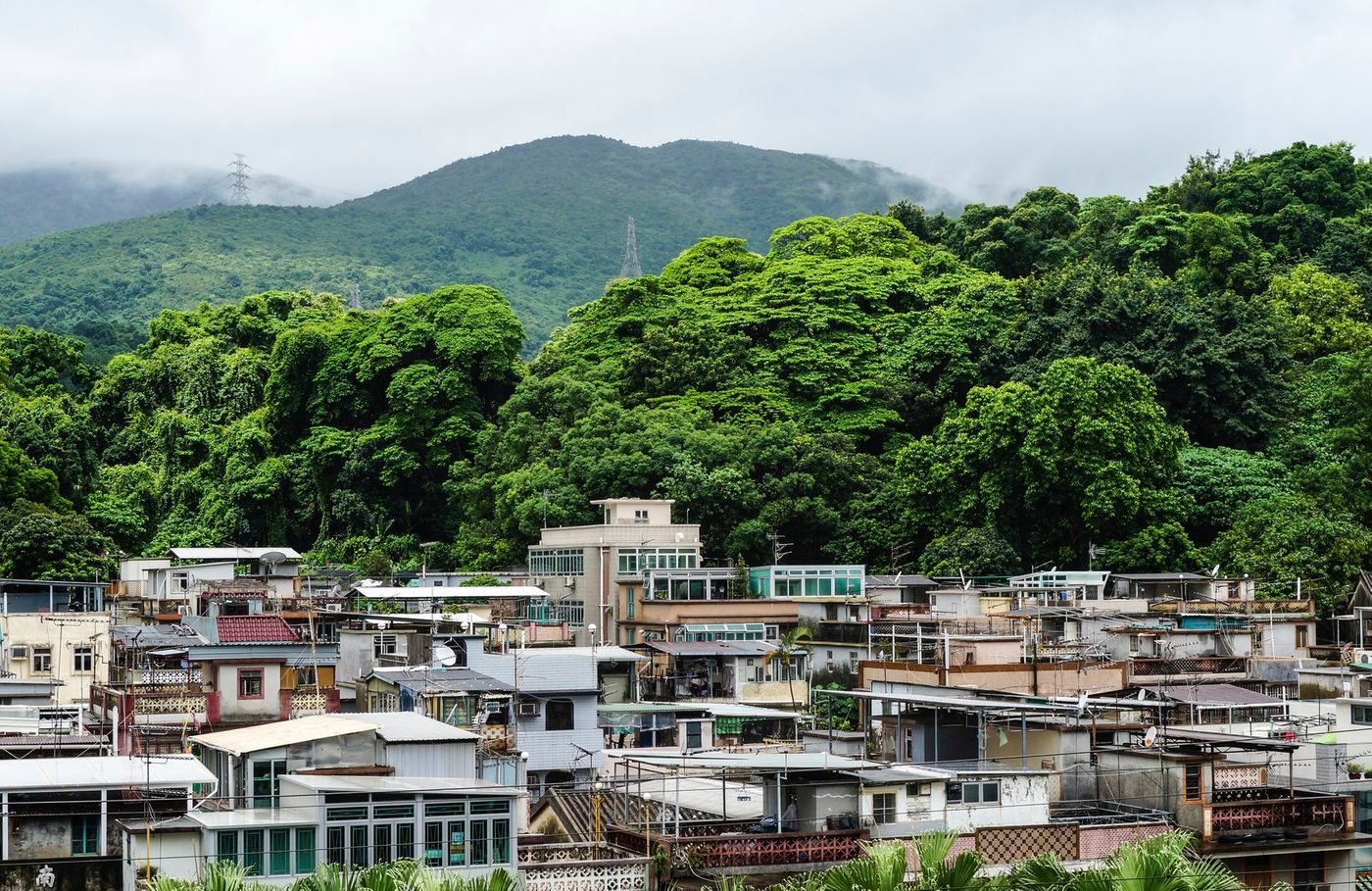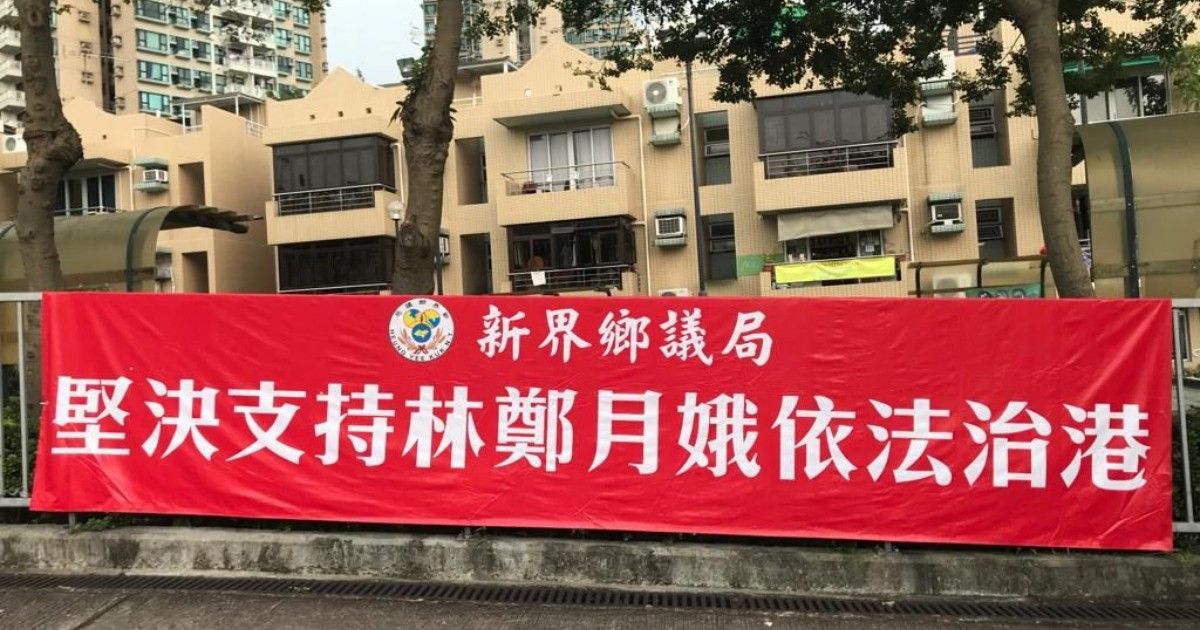
香港故事怎麼可能講來講去都是那一套呢?香港故事可以輕輕鬆鬆的娓娓道來嗎?
【Hong Kong to and from Hong Kong】What is a "village house" in the New Territories? How to rent comfortably without stepping on thunder?
When you pass through the New Territories by MTR, have you noticed that you often see three-storey village houses outside the window? Have you thought about renting? You may not want to be crowded into a "subdivided house" in the urban area, a rural house may be a good choice, but let's first understand how a village house in Hong Kong is made!

Since Hong Kong is considered to have a small land and a large population, both public and private housing are built with dozens of high-rise buildings. Why are there so many small village houses? From the efficiency of land use, it is indeed a bit strange. According to government classification and statistics, these are rural dwellings with about 210,000 units, but they occupy more than 45% of Hong Kong's residential land, and the density is much lower than that of public housing and private housing. For example, there are more than 70,000 families living in public housing per square kilometer, but there are only about 6,000 village houses!
The emergence of village houses in Hong Kong is ultimately related to the "small house policy". Before the British leased and governed the New Territories, residents of the New Territories, like Chinese farmers, built houses near farmland or wasteland for centuries. After the colonial government came, they were worried about causing resistance from the residents of the New Territories (in 1899, the residents of the New Territories really fought with the British army, which lasted for 100 days), so they continued the traditions of the residents in all aspects, including building their own houses. In the 1970s, the government wanted to reclaim land on a large scale to develop the New Territories, so it used the so-called "Small House Policy" (formally known as the "Small House Policy") to appease the indigenous residents in exchange for benefits. The policy stipulates that male residents who have reached the age of 18 and whose paternal ancestry can be traced back to the 1890s can apply for the construction of a small house with a maximum of 3 floors and each floor area does not exceed 700 square feet within the approved area once in their life, the so-called "small house". , there is no need to pay the government land premium. As for the way to acquire land, either wait for the government to grant it, or the indigenous people buy and own private land themselves.

After the reunification, the small house policy remained unchanged because many squires in the New Territories were "patriots". However, the villages and village houses in the New Territories that you see today are no longer the real homes of the indigenous inhabitants. In fact, many indigenous inhabitants have never lived in the villages at all, and have even immigrated to foreign countries. Many people were born and raised in foreign countries. Except for a small number of indigenous residents who really want to live in the village and build small houses, many people apply for small houses for future sales, which has nothing to do with their living needs. Therefore, some people even resell the small house. One of the resale methods does not even involve the actual house, but it allows the developer to make a big construction project. The process is as follows: Indigenous residents who have Ding rights but no land sell the Ding rights privately to real estate developers who own land in the New Territories to build houses. After the small houses are built, the developers will own them, and the developers will pretend to transfer the land to the original residents, so that They applied to the Lands Department for a building licence. This type of village house is usually not a single building, but like a real estate project, it is a community of many village houses, and real estate developers sell them for profit after they are built.
Village houses have always been the subject of social controversy in Hong Kong. Some people accuse the "small house policy" of favoring indigenous residents and unfair to most citizens; some also criticize the "small house policy" for exacerbating the shortage of land in Hong Kong, chaotic planning, and destroying the rural environment.
For relevant research on New Territories issues, it is recommended to pay attention to the relevant research of the " Indigenous Research Society ", such as the " New Territories Tao Ding Report " and so on.
Tips for renting a village house
In fact, most of the problems encountered in renting a village house are related to the history and characteristics of the village house mentioned above. Understanding these can help you know what to pay attention to when renting a village house.
1. Traffic problems in village houses
The reason why some village houses are cheap is because of the inconvenience of transportation and the lack of planning around them. Village houses that can be close to highways and roads (usually higher rents) are few. Most village house residents rely on walking, minibuses, taxis or driving to get in and out, because some areas where village houses are scattered have narrow roads and are far from the subway. The station and even the bus route are far away. Therefore, you should pay attention to the number of trains to and from get off work, the departure time of the last train, etc., so as not to take a taxi to work or go home frequently in the future.
2. The surrounding environment of the village house
Of course, some of the village houses are surrounded by a beautiful environment, with open landscapes, woods, hillsides, and even close to the seaside, but you should pay special attention to other environmental factors when renting. For example, you should pay attention to the mobile phone signal. Some telecommunications companies have very weak signals in some remote areas. At the same time, the home Internet network may also be limited (some village houses cannot apply for high-speed broadband Internet access, or require additional fees), simply come Say, think about it: Do you have trouble connecting with the outside world if you live here? Of course, some people living in village houses just want to escape from the world and stay away from the flowery world outside.
In addition, it is necessary to pay attention to whether the access roads are properly maintained. Some village houses can only be reached by small roads. How are the street lamps illuminated at night? At the same time, it is also best to know the security situation. You should even pay attention to whether there is a right-of-way problem in the surrounding area. In the past, someone encountered a neighbor who suddenly said, "This is my private lot, you won't be allowed in", which made people unable to return home.
3. Water, electricity and coal problems
Pay attention to whether the tap water and power supply facilities in the village house are normal. Generally, there is no gas supply in the village house, and LPG is used for cooking and bathing. It is necessary to know how to replace it, or whether to use an induction cooker or an electric water heater.
4. Property Management
Some newer village houses are touted by the community management method. There are gates, fences and property management personnel in front of the village. People who are used to living in urban areas may feel safer. However, a single village house has no security system at all, which can save management fees, but the occupants may feel unsafe, and burglaries often occur.
5. Unclear title
This situation mostly occurs in small houses that have not yet been sold. As I said before, many "dings" of small houses do not live in the village, or even live abroad. Therefore, you must make sure that the contract with you is the real owner. . If you rent a house through a real estate agent, the agent will search the book on your behalf. If you don't have an agent, you'd better check it yourself.
Like my work?
Don't forget to support or like, so I know you are with me..
Comment…